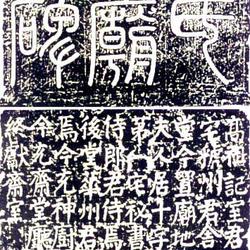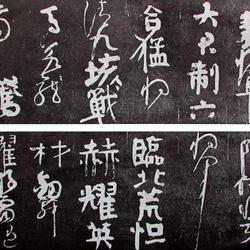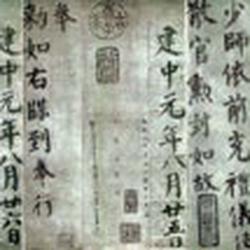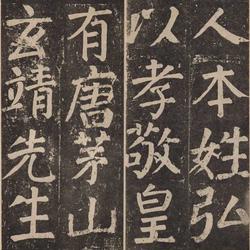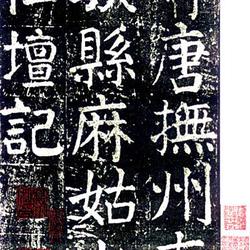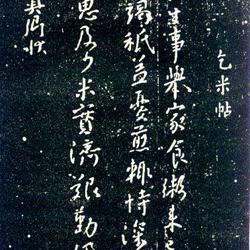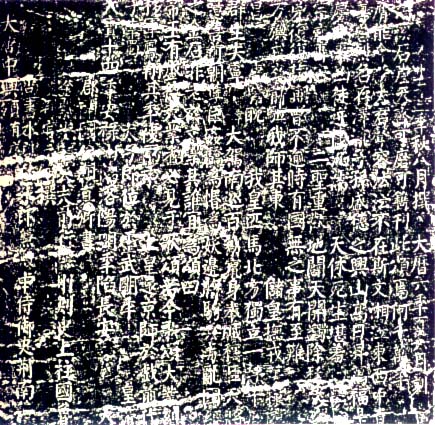
Full extension of Song Dynasty edition
The book was written in June of the sixth year of the Dali calendar (771). Regular script, Yuan Jiewen. 416.6×422.3 cm. Every 21 lines, 25 words per line. It is carved on the cliff of Wuxi River in Qiyang, Hunan Province, written vertically and running left. The Song rubbings are in the collection of the Palace Museum in Beijing.
Now also known as "Ode to Zhongxing", the inscription was written by Yuan Jie in the autumn and August of the second year of Yuan Dynasty (761), and the diction is elegant and powerful. Ouyang Xiu's "Collection of Ancient Records" says: "The stele was carved on a cliff in Yongzhou. There were many models and the stone was incomplete. Most of the calligraphy and paintings passed down by people in this world that are intact are just copies of models and are not authentic. This version was obtained from Therefore, the family of Li Jianzhong, the imperial censor who stayed in Taiwan in Xijing, built the authentic copy of Yashi forty years ago, which is particularly rare." It can be seen that Shiya had been damaged in the late Northern Song Dynasty. In the late Northern Song Dynasty, there were many kinds of reprints. "Ji Gu Lu" records: "The model of Zizhou in Sichuan is carved on two rocks in the northeast, and one copy is engraved on each. There are also engraved copies on Heming Mountain and Tongliang River." Therefore, the authentic copy is extremely rare. After the Qing Dynasty, the characters on the stone cliff were heavily gouged out, and the rubbings lost their facial features.
According to Ma Ziyun and Shi Anchang's "Appraisal of Stele Inscriptions": "In the autumn of 1973, a batch of inscriptions were seized at Lin Biao's house, including the upper half of the Zhongxing Song Shiya rubbings. They are actually Song rubbings, and some of the characters are damaged, but they are not too fat. It is not very thin, and although the characters are large, its spirit is similar to the characters on the Yan Family Temple Stele excavated in the Song Dynasty and the Yan Qin Li Stele unearthed later. There are nine hidden seals on it... The collector of this is Li Siyi, although it has not been found yet. , judging from the oldness of the carving method and color of the seal, it may be from the early Ming Dynasty." Also: "The first half of this Song rubbing begins with "The Song of Zhongxing in the Tang Dynasty" and ends with "Bailiao Chuanshen" There are 168 characters in "Serving the Thief and Calling the Minister". Including the rubbings and inscriptions in the early Ming Dynasty, there are 162 characters in total. In the second half of the Ming rubbings, there are 160 characters." This copy is in the collection of the Palace Museum in Beijing.

